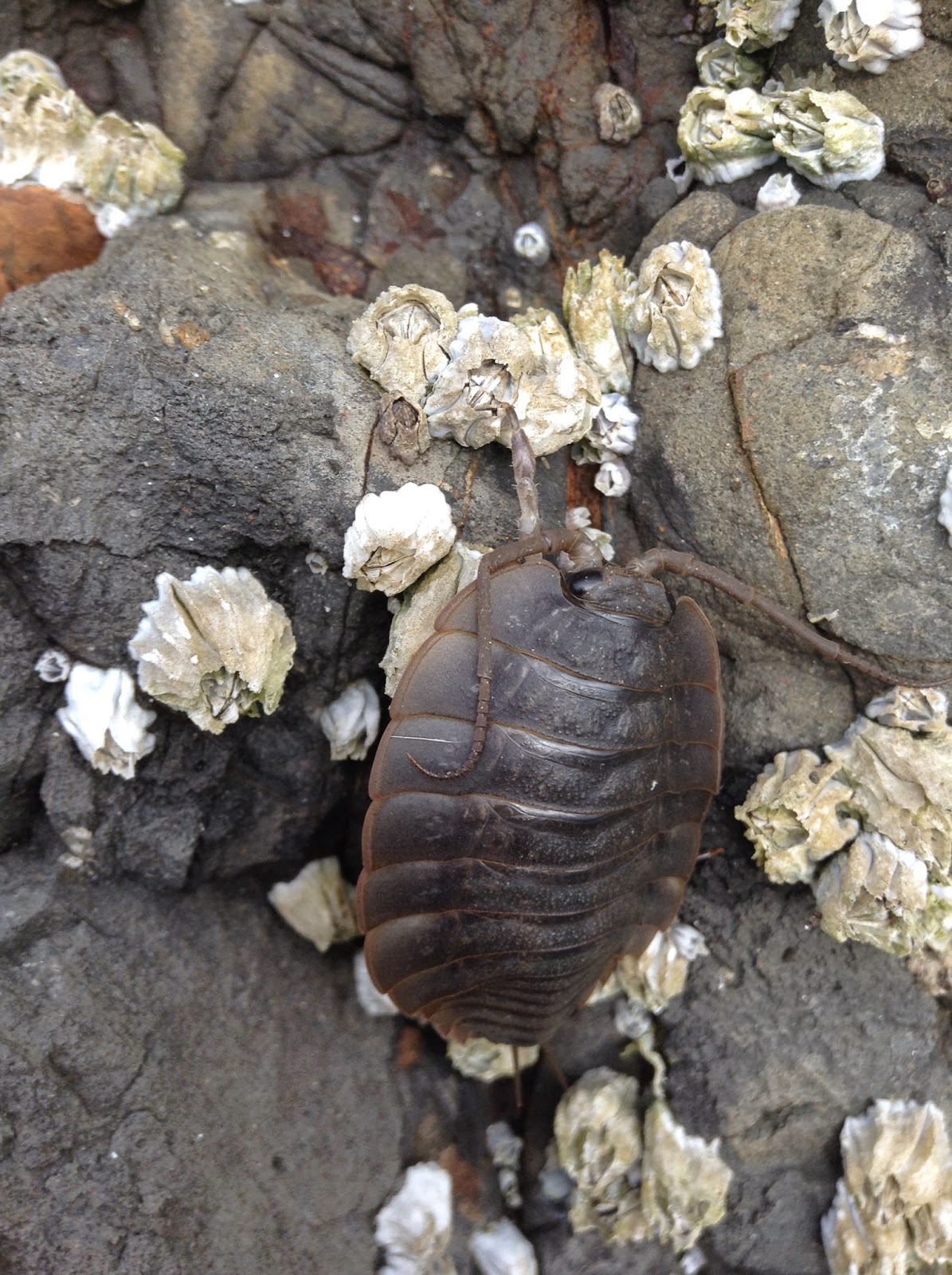August 25th-August 31st
August 25th-August 31st
Daily Low Tides
Monday, August 25th
-0.2' @ 7:20 AM
1.3' @ 7:29 PM
Tuesday, August 26th
0 @ 7:51 AM
Wednesday, August 27th
0.2' @ 8:19 AM
Thursday, August 28th
0.5' @ 8:47 AM
Friday, August 29th
0.8' @ 9:15 AM
Saturday, August 30th
1.2' @ 9:45 AM
Sunday, August 31st
1.7' @ 10:22 AM
Shaggy mouse nudibranch (Aeolid papillosa)
Opalescent nudibranch (Hermissenda crassicornis)
Lion's mane jelly (Cyanea capillata)
Red rock crab (Cancer productus)
Dungeness crab (Cancer magister)
Striped surfperch (Embiotica lateralis)
Cabezon
Starry flounder (Platichthys stellatus)
Leather chiton (Katherina tunicata)
Pacific sea nettle (Chrysaora fuscescens)
Ctenophores
Bryozoans
Purple sea urchins (Strongylocentrotus purpuratus)
Rock louse (Ligia pallasii)
Porcelain crab (Petrolisthes eriomerus)
References
Brusca, R.C. and Brusca, G.J. (eds.) Invertebrates. 2nd ed. Sunderland, MA: Sinauer Associates, Inc. 2003.
Sept, J. D. The Beachcomber's Guide to Seashore Life of California. Revised edition. Madeira Park, B.C.: Harbor Publishing. 2002.
Daily Low Tides
Monday, August 25th
-0.2' @ 7:20 AM
1.3' @ 7:29 PM
Tuesday, August 26th
0 @ 7:51 AM
Wednesday, August 27th
0.2' @ 8:19 AM
Thursday, August 28th
0.5' @ 8:47 AM
Friday, August 29th
0.8' @ 9:15 AM
Saturday, August 30th
1.2' @ 9:45 AM
Sunday, August 31st
1.7' @ 10:22 AM
This week saw lots of sea gooseberries (a type of ctenophore, or comb jelly) and jellyfish washed up on the beach, although no more purple sailors. We also spotted a rock louse, an arthropod that looks a bit like a cockroach.
A rock louse climbing over barnacles. Photo by Katie Corliss.
Shifting
our gaze upwards: the last of the tufted puffins are still hanging
around, spotted mainly on the north and west sides of the Rock. As the nesting season winds down, these birds will begin heading
out to open sea, where they spend their winters. They'll be back in March.
Puffins aren't the only birds winding down their nesting season. HRAP interpreters have been spotting more and more cormorants resting and sunning themselves on the rock. With most of their chicks fledged, their job is done for the summer. Well done everybody!
Creature Highlights
Staff interpreter Katie Corliss has provided us with some great sand dollar shots this week. We don't often see living sand dollars unless we're at an aquarium or SCUBA diving. These echinoderms-- the group that contains sea stars, urchins, and cucumbers-- are more likely to be found underwater than in the intertidal zone which we humans are able to access at low tide. Beachcombers are familiar with their "tests," or internal shells, because they tend to wash up on the shore. But what are these animals like when they're alive?
Puffins aren't the only birds winding down their nesting season. HRAP interpreters have been spotting more and more cormorants resting and sunning themselves on the rock. With most of their chicks fledged, their job is done for the summer. Well done everybody!
Creature Highlights
Staff interpreter Katie Corliss has provided us with some great sand dollar shots this week. We don't often see living sand dollars unless we're at an aquarium or SCUBA diving. These echinoderms-- the group that contains sea stars, urchins, and cucumbers-- are more likely to be found underwater than in the intertidal zone which we humans are able to access at low tide. Beachcombers are familiar with their "tests," or internal shells, because they tend to wash up on the shore. But what are these animals like when they're alive?
The "furry" underside of a living sand dollar. Photo by Katie Corliss
When alive, the sand dollars common off the Oregon Coast (Dendraster eccentricus, or the Eccentric sand dollar) are purple and furry looking. This '"fur" is actually thousands of tiny tube feet which help the animal move, feed, and breathe. Special flattened tube feet on the "petaloids" (the five loops on the upper surface of the sand dollar that look like flower petals) exchange waste for oxygen. Incidentally, these five petaloids are an example of the five-part radial symmetry shared by all echinoderms. (Think of the five arms of a typical sea star.)
Sand dollar tests are a familiar site to beachcombers. The five loops are the "petaloids," which function as the site of gas exchange in the living animal. Photo by Katie Corliss.
Sand dollars also use their tube feet to move food particles from the
sand or water along the grooves on the underside of their body and into
their mouths. If occupying a rough, energetic environment with lots of
wave action, these animals will bury themselves under the sand, but when conditions are calm they will just out from the sand at an angle. In some species, young sand dollars ingest
dense particles of sand or rock to serve as ballast, keeping them
anchored to the seafloor.
Birds
Tufted Puffin (Fratercula cirrhata)
Tufted Puffin (Fratercula cirrhata)
Common Murre (Uria aalge)
Black Oystercatcher (Haematopus bachmani)
Western Gull (Larus occidentalis)
Black Turnstones (Arenaria melanocephala)
Intertidal
Ochre star (Pisaster ochraceus)Black Oystercatcher (Haematopus bachmani)
Western Gull (Larus occidentalis)
Black Turnstones (Arenaria melanocephala)
Intertidal
Shaggy mouse nudibranch (Aeolid papillosa)
Opalescent nudibranch (Hermissenda crassicornis)
Lion's mane jelly (Cyanea capillata)
Red rock crab (Cancer productus)
Dungeness crab (Cancer magister)
Striped surfperch (Embiotica lateralis)
Cabezon
Starry flounder (Platichthys stellatus)
Leather chiton (Katherina tunicata)
Pacific sea nettle (Chrysaora fuscescens)
Ctenophores
Bryozoans
Purple sea urchins (Strongylocentrotus purpuratus)
Rock louse (Ligia pallasii)
Porcelain crab (Petrolisthes eriomerus)
References
Brusca, R.C. and Brusca, G.J. (eds.) Invertebrates. 2nd ed. Sunderland, MA: Sinauer Associates, Inc. 2003.
Sept, J. D. The Beachcomber's Guide to Seashore Life of California. Revised edition. Madeira Park, B.C.: Harbor Publishing. 2002.






Comments
Post a Comment